Why does foreign aid spending benefit Americans? How much is appropriate in the next federal budget?
Budget makers in Congress and the White House continue to wrestle with these questions. Five weeks ago they pushed the deadline for answers to December 8 from September 30, the official end of the 2017 fiscal calendar. If lawmakers and the administration can’t reach agreement by December 8, they will be forced to consider another continuing resolution to avoid a government shutdown.
No one knows the outcome, but if a continuing resolution for the full 2018 fiscal year is agreed, foreign aid spending would remain around $50 billion, or about 1 percent of the $4 trillion federal budget. Roughly half of the aid spending would be marked for humanitarian and development assistance.
Here are brief highlights of how Bill Clinton, Madeleine K. Albright, Mary Robinson, former president of Ireland, and four other leaders address those two questions and related concerns about aid spending and America’s role on the world stage. They were among nearly fifty experts from academia, international organizations, think tanks, businesses and government at the 14th annual Brookings Blum Roundtable on Global Poverty.
Bill Clinton, founder, the Clinton Foundation; 42d President of the United States
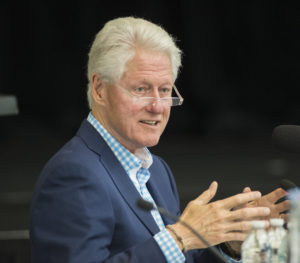 “The job of every self-aware citizen in the world is to try to build the positive and reduce the negative forces of interdependence. And the only way you can do that is to say cooperation is better than conflict. Diverse groups make better decisions than homogeneous ones. You have to have shared opportunities and shared responsibilities and, in the end, since you’re going to have diversity as never before, people have to feel like they’re a part of your community. We have to model that.”
“The job of every self-aware citizen in the world is to try to build the positive and reduce the negative forces of interdependence. And the only way you can do that is to say cooperation is better than conflict. Diverse groups make better decisions than homogeneous ones. You have to have shared opportunities and shared responsibilities and, in the end, since you’re going to have diversity as never before, people have to feel like they’re a part of your community. We have to model that.”
Madeleine K. Albright, chair, Albright Stonebridge Group, and chairman of National Democratic Institute; former Secretary of State under President Clinton
 “I do think the United States is the indispensable nation, but there is nothing in the word indispensable that says ‘alone’. It’s in partnership…. What I’m troubled by is that all of a sudden democracy seems to be seen as a four letter word and not really mentioned enough in the support of values that the United States has represented and needs to continue to represent…. One of the ways to get support for foreign aid is to talk about its importance to our national security, especially when speaking with (the) American people.”
“I do think the United States is the indispensable nation, but there is nothing in the word indispensable that says ‘alone’. It’s in partnership…. What I’m troubled by is that all of a sudden democracy seems to be seen as a four letter word and not really mentioned enough in the support of values that the United States has represented and needs to continue to represent…. One of the ways to get support for foreign aid is to talk about its importance to our national security, especially when speaking with (the) American people.”
Liz Schrayer, president and CEO, U.S. Global Leadership Coalition, an advocacy group for strengthening U.S. national security, American business interests and humanitarian aid through international programs
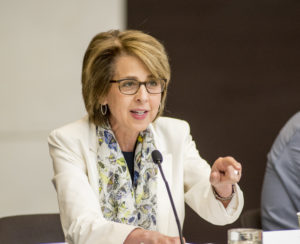 “One of the biggest challenges with debate on foreign aid is this wild misconception about how much American actually spends.” (In opinion surveys over the past four decades, American voters regularly estimate – incorrectly – that foreign aid spending is 20 percent of the federal budget; a majority say funding between 5 and 10 percent would be appropriate.)
“One of the biggest challenges with debate on foreign aid is this wild misconception about how much American actually spends.” (In opinion surveys over the past four decades, American voters regularly estimate – incorrectly – that foreign aid spending is 20 percent of the federal budget; a majority say funding between 5 and 10 percent would be appropriate.)
Americans “want to talk about America’s role in the world, why it matters to our national security, why it matters to our economic interests, why it matters to our humanitarian values…. They want (foreign aid) to be effective, and there’s no question that it needs to be effective. What people don’t realize is how much we actually have achieved with it….Some of the best advocates have been the generals.”
Laura Tyson, distinguished professor, faculty director of the Institute for Business and Social Impact at Haas School of Business at University of California Berkeley, and chair of the Board of Trustees of the Blum Center for Developing Economies; former head of Council of Economic Advisers under President Clinton
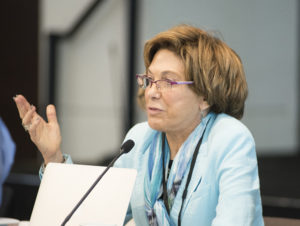 “If you combine massive tax cuts with spending on defense, Social Security, and Medicare with a desire to balance the budget in a 10-year window, you have to reduce non-defense discretionary spending by 40 percent.” (Note: two-thirds of the federal budget is committed to defense, Social Security, Medicare and interest payments on federal debt, which recently exceeded $20 trillion.)
“If you combine massive tax cuts with spending on defense, Social Security, and Medicare with a desire to balance the budget in a 10-year window, you have to reduce non-defense discretionary spending by 40 percent.” (Note: two-thirds of the federal budget is committed to defense, Social Security, Medicare and interest payments on federal debt, which recently exceeded $20 trillion.)
Sam Worthington, CEO of InterAction, the largest U.S. alliance of nongovernmental international organizations
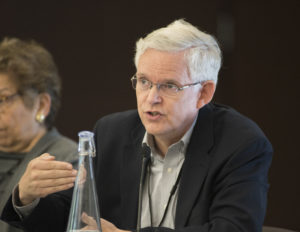 “Extreme cuts are self-defeating, they harm U.S. national interests, and they limit the flexibility of our development tool kit.”
“Extreme cuts are self-defeating, they harm U.S. national interests, and they limit the flexibility of our development tool kit.”
Mary Robinson, president of Mary Robinson Foundation-Climate Justice; former president of Ireland and United Nations High Commissioner on Human Rights
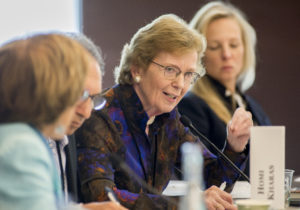 “Back in 1945 the U.S. played the role of a major power and pioneer of democracy in helping to shape the multilateral institutions. It was the U.S. that helped establish a strong set of values ranging from liberty and equality to diversity and truth. Remaining true to these values and to the principles of the rule of law, accountability and human rights must guide the future of the U.S. on … their contribution to the multilateral institution, and their role in international development cooperation.”
“Back in 1945 the U.S. played the role of a major power and pioneer of democracy in helping to shape the multilateral institutions. It was the U.S. that helped establish a strong set of values ranging from liberty and equality to diversity and truth. Remaining true to these values and to the principles of the rule of law, accountability and human rights must guide the future of the U.S. on … their contribution to the multilateral institution, and their role in international development cooperation.”
Ngozi Okonjo-Iweala, chair of GAVI, the Vaccine Alliance; former finance minister of Nigeria, World Bank managing director and Brookings senior fellow
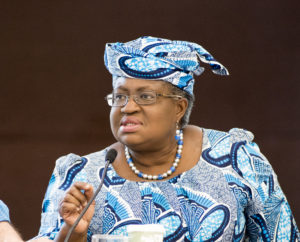 “The world is changing. Many countries now realize that they have to depend a lot on their own resources. So they are stepping up, saying we are going to do everything we can to try and generate more of our own resources to do more of our own development. Many leaders on the African continent, many policymakers, are thinking in this direction. We need to reflect on, how can the U.S. assistance, whatever is left of it, be used in a way that is impactful to help leverage up the work that these countries are willing to do for themselves?”
“The world is changing. Many countries now realize that they have to depend a lot on their own resources. So they are stepping up, saying we are going to do everything we can to try and generate more of our own resources to do more of our own development. Many leaders on the African continent, many policymakers, are thinking in this direction. We need to reflect on, how can the U.S. assistance, whatever is left of it, be used in a way that is impactful to help leverage up the work that these countries are willing to do for themselves?”
** **
Americans’ overall support for President Trump’s “America First” policies is trending lower, according to the Chicago Council on Global Affairs. Read the Council’s full interactive report, “What Americans Think about America First,” this October 11 commentary in the Financial Times by Ivo Daalder, president of the Council, and this October 1 Washington Post analysis of the report.
** **
Top photo shows an Afghan girl at a refugee camp near Islamabad in 2014, one of an estimated one million Afghan refugees who live in poverty conditions across Pakistan. The U.S. plans to provide $345 million in assistance to Pakistan in 2018. Photo credit: Abdul Qadir Memon, courtesy of Mercy Corps
Inset photo credits: Alex Irvin, Brookings Institution

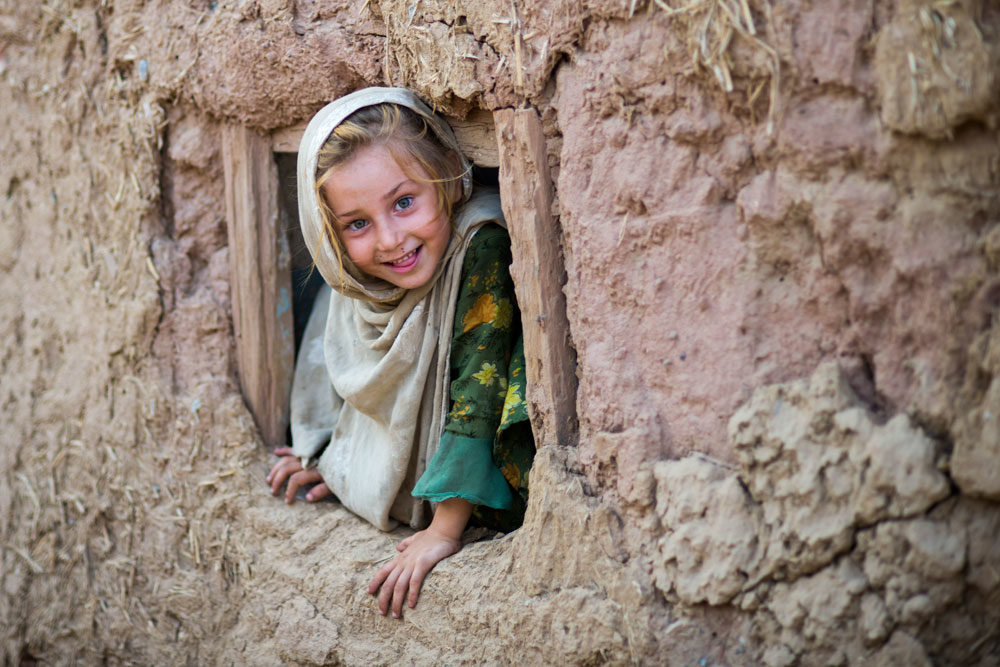
Leave a Reply